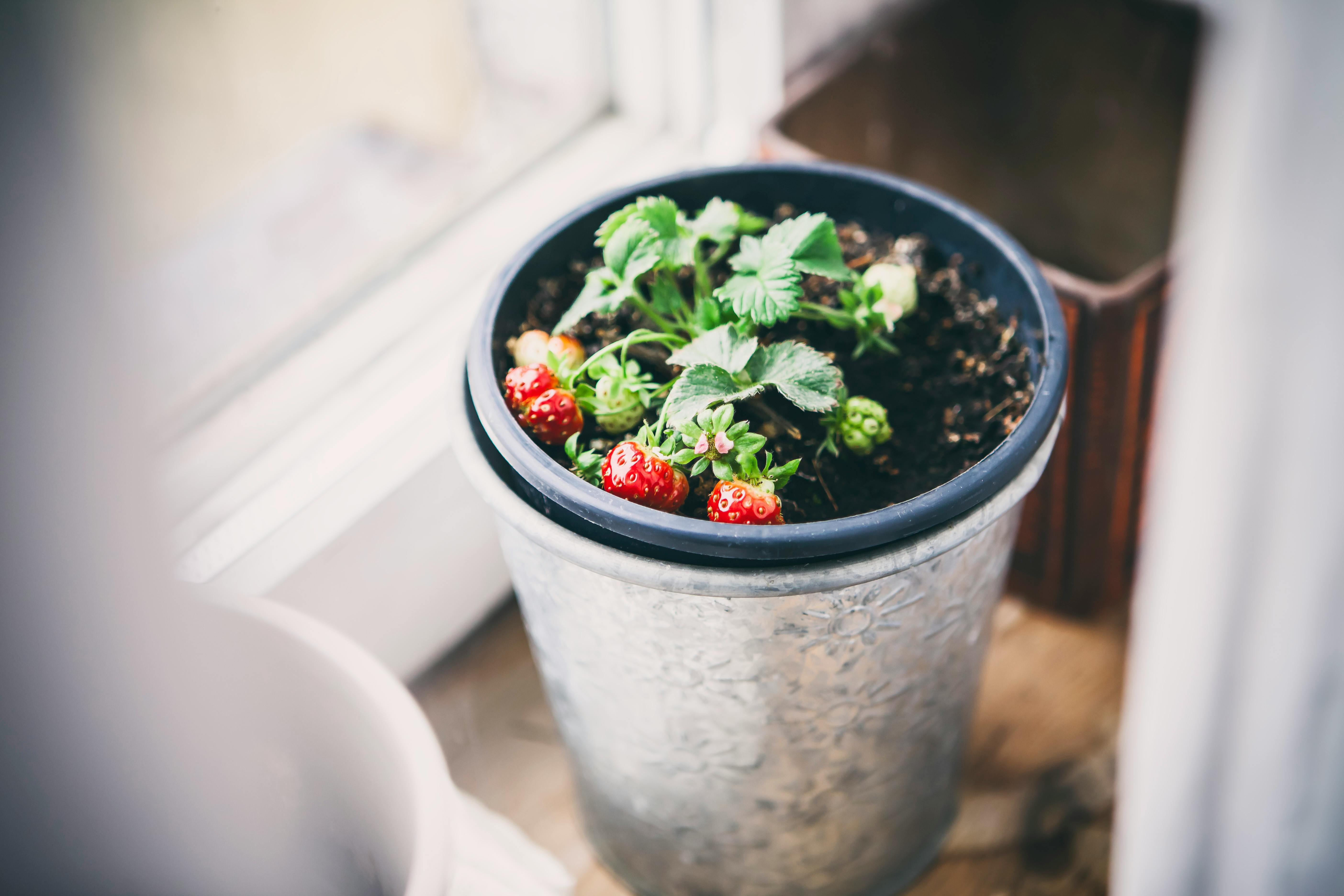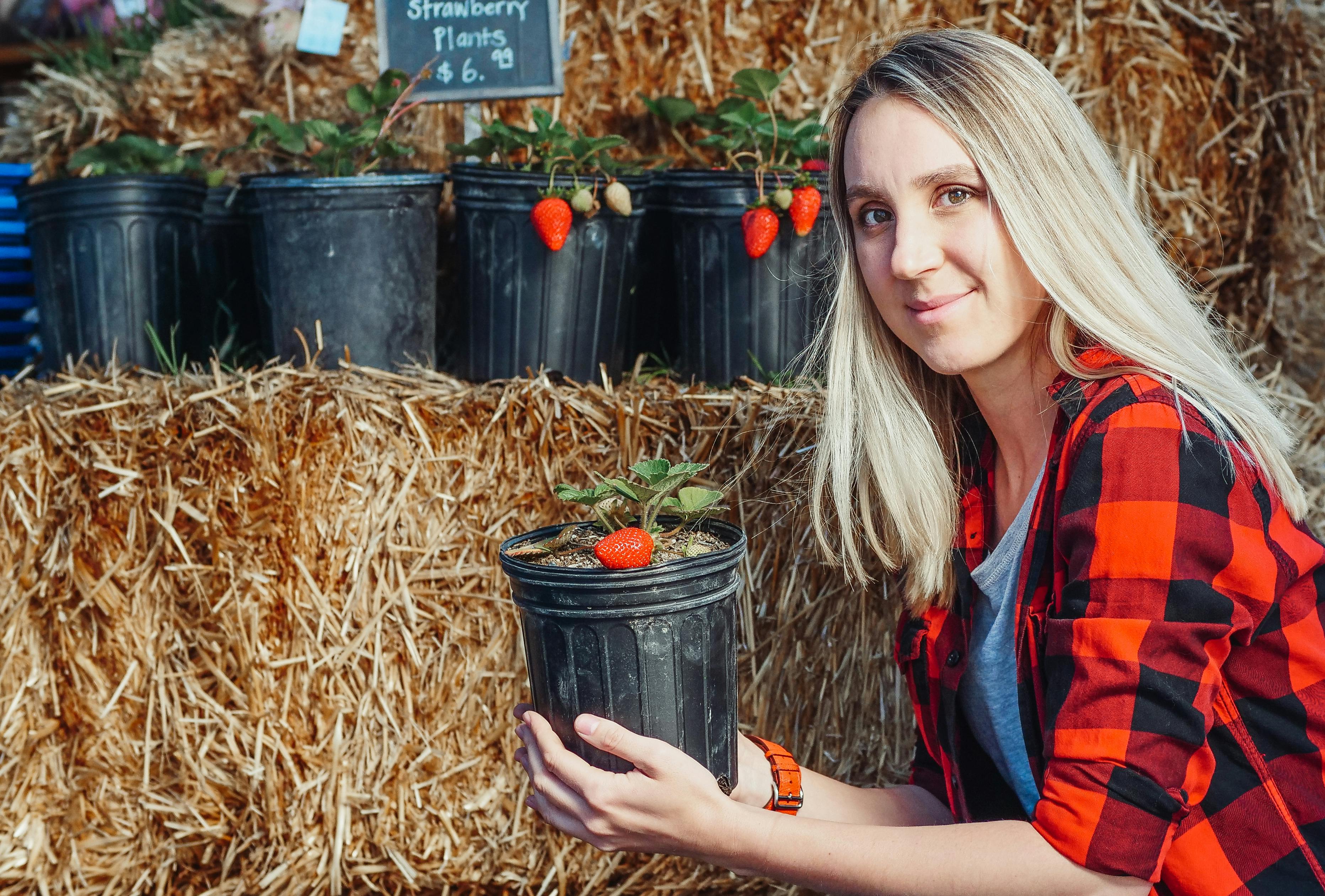Dragon fruit, also known as pitaya or the strawberry pear, is a tropical fruit that is native to Central and South America. It is an unusual and exotic addition to your home garden that will add color and flavor to your meals. Growing dragon fruit in a pot is easy and it doesn’t take up too much space. With the right potting mix, container, and care you can enjoy delicious juicy dragon fruits from your own potted plants. In this guide, you will learn how to grow dragon fruit in a pot so you can enjoy this sweet treat in the comfort of your own home.Dragon fruit is a tropical fruit that is native to Central and South America. It is also known as pitaya or Pitahaya and has a unique shape and vibrant color. The outside of the fruit is usually bright pink or red with green scales, and the inside contains white flesh with small edible black seeds. Dragon fruit has a sweet flavor with hints of both kiwi and pear. It can be eaten raw, made into juices or smoothies, used in baking, or added to salads for a burst of flavor.
Selecting A Pot For Growing Dragon Fruit
Growing dragon fruit in pots is a great way to enjoy the sweet, mildly tart flavor of this exotic fruit. When selecting a pot for growing your dragon fruit, there are a few important factors to consider. Size is one of the most important aspects when choosing a pot for dragon fruit. The pot should be large enough to accommodate the roots and leaves of the plant, as well as allowing plenty of room for drainage. It is also important to choose a pot that has good drainage holes on the bottom. This will ensure that excess water can escape and prevent root rot.
Another factor to consider when selecting a pot for growing dragon fruit is the material it is made from. Clay pots are porous and provide good air circulation, but they can dry out quickly so they will need to be watered more often than other types of pots. Plastic pots retain moisture better than clay but can become too hot in direct sunlight and could damage the plant’s roots.
Finally, you should also take into consideration the type of soil you will be using in your pot. Dragon fruits prefer well-draining soil that is rich in organic matter such as compost or manure. If you are using soil from your garden or yard, it should be amended with organic matter before use to ensure proper drainage and nutrition for your dragon fruit plant.
Selecting the right pot for your dragon fruit plant is an important step in ensuring its success. By taking into account size, material, and soil type when choosing a pot, you can give your plant the best chance at producing sweet and delicious fruit!
Preparing The Soil For Growing Dragon Fruit
Dragon fruit is a tropical plant that requires well-draining soil to thrive. It is important to prepare the soil for growing dragon fruit before planting to ensure that the plant has optimal conditions for growth. To prepare the soil, it is necessary to add organic matter such as compost or manure. This will help improve drainage and increase nutrient levels in the soil. Additionally, it is important to make sure that the pH level of the soil is between 5.5 and 7.0, as this is ideal for dragon fruit growth.
When preparing the soil, it is also important to add fertilizers such as nitrogen, phosphorus, and potassium. These elements will help promote healthy growth and development of dragon fruit plants. Additionally, it is beneficial to add some lime to raise the pH level of acidic soils if needed. Lastly, it is essential to make sure that there are no weeds or debris in the soil before planting dragon fruit plants as this can cause problems with their growth.
Once all of these steps have been taken, then the soil should be ready for planting dragon fruit plants. It is important not to over-water when planting them as they do not like wet feet and may become prone to disease if they are too wet for long periods of time. Additionally, dragon fruits need plenty of sunlight so it’s best to plant them in an area where they will receive at least six hours of direct sunlight per day. By following these steps, you will have successfully prepared your soil for growing dragon fruit and be on your way to a successful harvest!
Introduction
Dragon fruit is a tropical fruit that is native to Central and South America. This exotic fruit has become popular in recent years due to its attractive appearance and sweet taste. Growing dragon fruit can be a rewarding experience, but it requires proper care and attention. In this article, we will discuss how to plant dragon fruit plants and take care of them.
Where To Plant The Dragon Fruit Plant?
Dragon fruit plants prefer warm climates with plenty of sunlight, so it is best to choose an area that receives at least 6-8 hours of direct sunlight each day. It is also important to choose an area with good drainage as dragon fruit plants can be prone to root rot if the soil becomes too wet. Additionally, make sure the soil you are planting in is nutrient-rich as dragon fruits require fertile soil for optimal growth.
How To Plant The Dragon Fruit Plant?
When planting a dragon fruit plant, it is important to dig a hole that is twice as wide as the root ball of the plant and just as deep. Once the hole is ready, place the plant inside and fill it up with soil making sure there are no air pockets around the roots. After planting, water the area thoroughly until you see water coming out from the bottom of the hole.
Care Of The Dragon Fruit Plant After Planting
Once you have planted your dragon fruit plant, there are several steps you need to take in order to ensure its health and growth. First and foremost, make sure you provide regular watering for your plant while avoiding overwatering which can cause root rot. Additionally, fertilize your dragon fruit plant every few weeks with an all-purpose fertilizer or one specially formulated for cacti or succulents. Finally, prune off any dead or damaged branches on a regular basis for healthy growth and development of your plant.
Conclusion
Growing dragon fruits can be a rewarding experience if done properly! By following these tips on where to plant your dragon fruit plant and how to care for it afterwards, you should be able to successfully grow this delicious tropical treat!
Watering and Fertilizing Your Dragon Fruit Plant
Watering your dragon fruit plant is essential to its growth and health. You should water your plant at least once a week or more, depending on the soil and climate conditions. When watering, use lukewarm water and avoid too much water as this can cause root rot. If the soil is very dry, you may need to water more often. The soil should be kept moist but not wet.
Fertilizing your dragon fruit plant is also important for its growth and health. A balanced fertilizer with equal parts nitrogen, phosphorus, and potassium is recommended for optimal growth of dragon fruit plants. Apply the fertilizer according to the instructions on the package; usually a few times during the growing season is sufficient. Make sure to mix the fertilizer with water before applying it to the soil.
When fertilizing your dragon fruit plant, it is important to avoid over-fertilizing as this can burn the roots and damage the plant. Over-fertilization can also cause poor flowering and fruiting or even death of the plant. It is best to monitor your plant regularly for signs of nutrient deficiency or excess in order to ensure optimal nutrition for its growth.
In general, dragon fruit plants do not require much maintenance apart from regular watering and fertilizing. However, if you notice any signs of distress such as yellowing leaves or stunted growth, it may be time to give your dragon fruit some extra care by adjusting its watering schedule or fertilizing regimen accordingly.

Pruning And Training A Dragon Fruit Plant In A Pot
Pruning and training a dragon fruit plant in a pot can be an exciting gardening experience. Whether you are growing it as a houseplant or using it to decorate your outdoor garden, pruning and training your dragon fruit plant can help ensure that it grows healthy and strong. Pruning will help to keep the plant from becoming overgrown, while training will encourage the development of beautiful blooms. Here are a few tips to help you get started on pruning and training your dragon fruit plant in a pot.
One of the most important steps when it comes to pruning and training your dragon fruit plant is to make sure that you are using the right tools. Pruning shears are ideal for trimming back branches or stems that may be getting too long or unruly, while small garden scissors can be used for removing dead or dying leaves. Additionally, if you plan on doing any major pruning, such as removing large branches or stems, it is best to use a pair of loppers for this task.
When you begin pruning your dragon fruit plant, make sure that you focus on thinning out the center of the plant so that light can reach all parts of it. Additionally, trim away any dead or damaged stems and branches. This will encourage new growth and help keep the plant healthy. When training your dragon fruit plant, you should aim to tie back any unruly branches using soft garden ties or twine- this will help keep them in place while also allowing them plenty of space to grow.
Finally, remember to water your dragon fruit regularly according to its needs- usually about once every two weeks is enough for optimal growth. If you notice any signs of distress (yellowing leaves, stunted growth, etc.), then adjust your watering schedule accordingly as these could be signs that the soil is not draining properly or that the plant is not getting enough nutrients from its soil mixture. With proper care and attention, your dragon fruit should thrive in its pot!
Protecting Your Dragon Fruit Plant From Pests And Diseases
Dragon fruit plants are vulnerable to pests and diseases, so it is important to take preventive measures to ensure their health and productivity. The first step is to choose a planting site that is well-drained and in full sun. Avoid planting in areas that have been recently treated with pesticides or other chemicals. When planting, make sure to use high quality soil and fertilizer, as well as a trellis or other support structure for the plant.
Once you have established your dragon fruit plant, there are several steps you can take to protect it from pests and diseases. Regularly inspect the plant for signs of infestation or damage, such as wilting leaves or discolored fruit. If you see any signs of infestation, treat the affected area with an appropriate pesticide or fungicide. It is also important to keep the area around the plant free of debris and weeds, which can provide hiding spots for pests and encourage disease development.
In addition to pest control, you should also practice good cultural practices such as pruning and thinning your dragon fruit plants to promote air circulation and prevent overcrowding. This will reduce humidity levels in the area, which helps prevent fungal diseases from developing. When possible, water your dragon fruit plants in the morning rather than at night so that any moisture on their leaves will be able to evaporate before evening temperatures drop.
Finally, it is important to regularly monitor your dragon fruit plants for signs of disease or damage so that you can address issues quickly before they become too serious. If you find any infected plants, prune them back carefully and dispose of any dead material away from other healthy plants. With proper care and attention, your dragon fruit plants should thrive!
Harvesting Your Dragon Fruit Plant In A Pot
Harvesting dragon fruit from your plant in a pot is an easy and rewarding experience. Dragon fruit plants are drought-tolerant and relatively easy to care for, making it a great option for container gardening. When it’s time to harvest, it’s important to know when the fruits are ripe and how to harvest them without damaging the plant. Here are some tips on harvesting your dragon fruit plant in a pot.
When you’re ready to harvest your dragon fruit, look for signs of ripeness. The fruits should be bright red or pink, with a slightly soft texture and sweet smell. If you’re unsure if your dragon fruits are ready to be harvested, check the stem of the fruit; if it snaps off easily when pulled gently, then it is ready for harvesting.
Once you have identified which fruits are ripe, cut them off the vine using a sharp knife or pruning shears. Don’t pull the fruit off as this can damage the plant’s stem and affect its growth in the future. Be sure to leave at least two inches of stem attached to each fruit so that they don’t spoil quickly after being harvested.
Once you’ve harvested your dragon fruits, store them in a cool place out of direct sunlight until you’re ready to eat them or use them in recipes. Use them within one week of harvesting for optimal freshness – they don’t last very long after being picked!
Harvesting dragon fruit from your potted plant is an easy and rewarding experience that doesn’t require much effort or expertise! With just a few steps and some patience, you can enjoy delicious dragon fruits all year round!

Conclusion
Dragon fruit is an attractive and delicious addition to any home garden. Growing dragon fruit in a pot is easy and relatively inexpensive, and it provides a low-maintenance way to add this tropical treat to your landscape. With a little effort and patience, you can enjoy the beautiful flowers and sweet fruit of this unique plant. Just remember to choose the right size pot, provide adequate light and water, use quality soil, and you’ll have a healthy dragon fruit plant that will reward you with years of enjoyment.
Dragon fruit is definitely an exotic choice for container gardening, but it’s worth the effort. Not only does it look amazing in your yard or patio, but the sweet flavor of the dragon fruit will be a welcome addition to your diet. So why not give growing dragon fruit in a pot a try? You won’t regret it!



